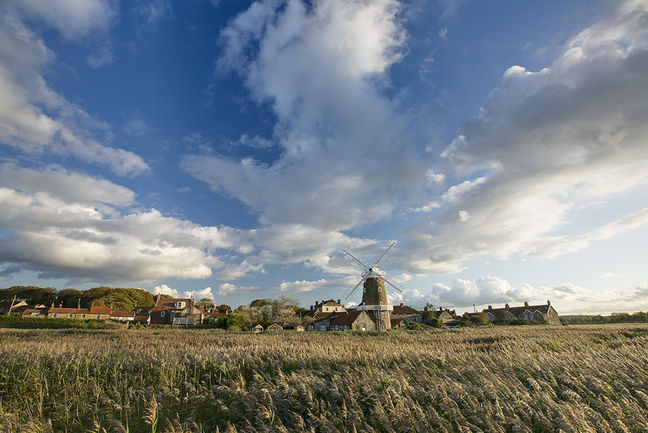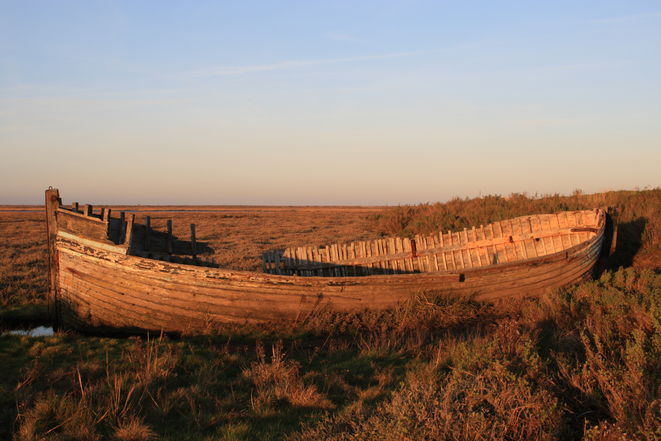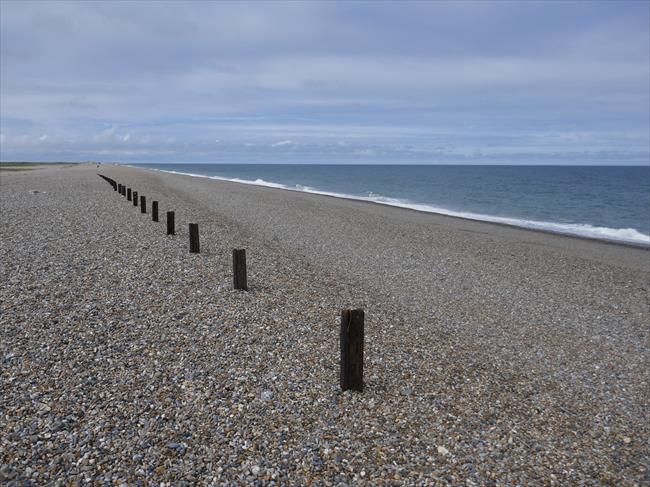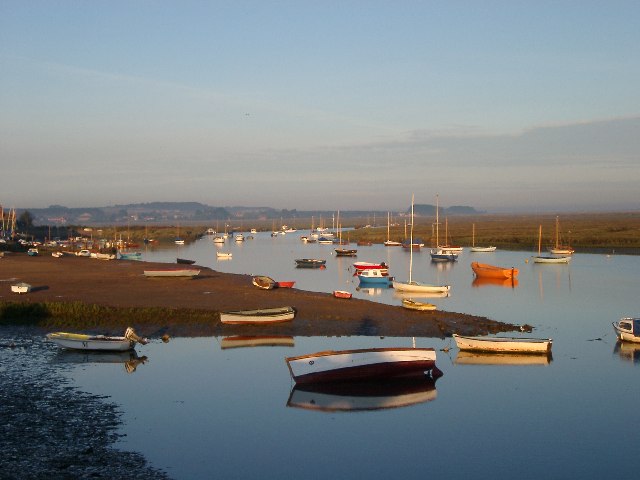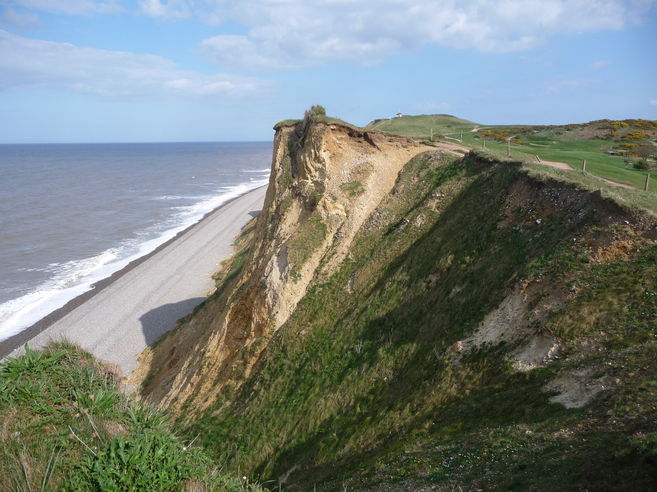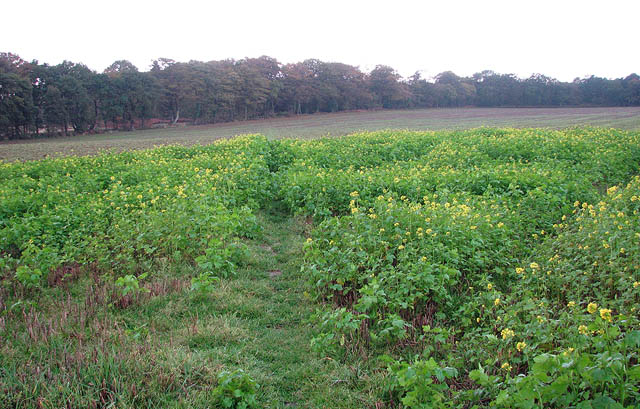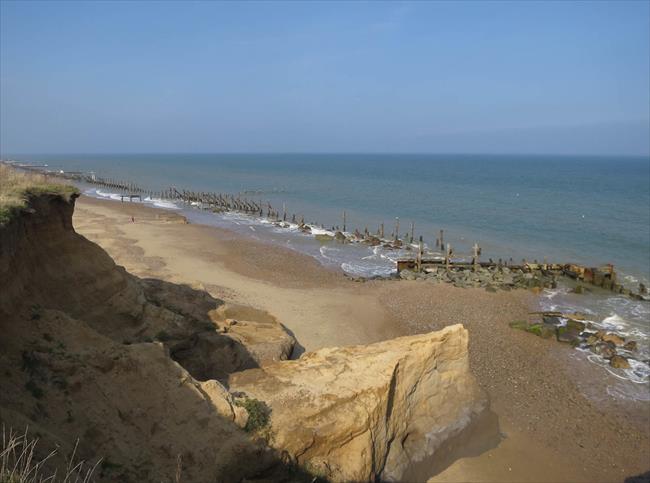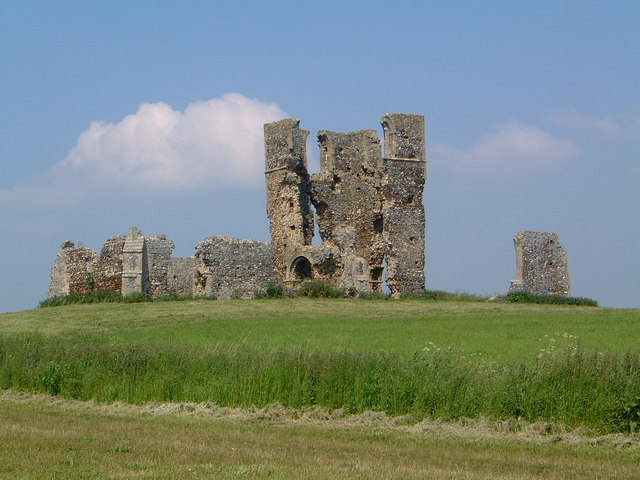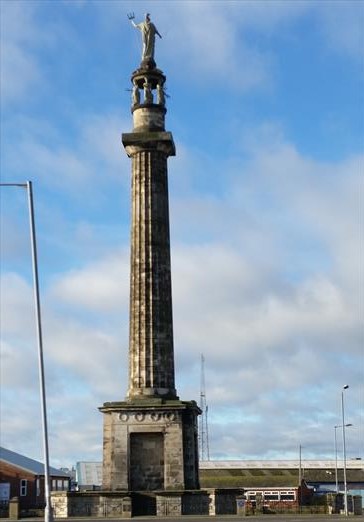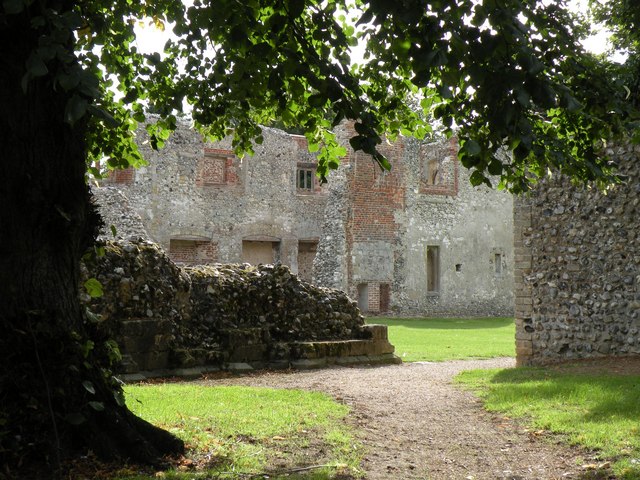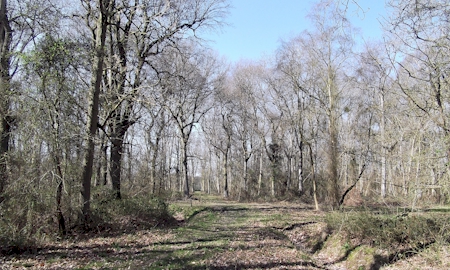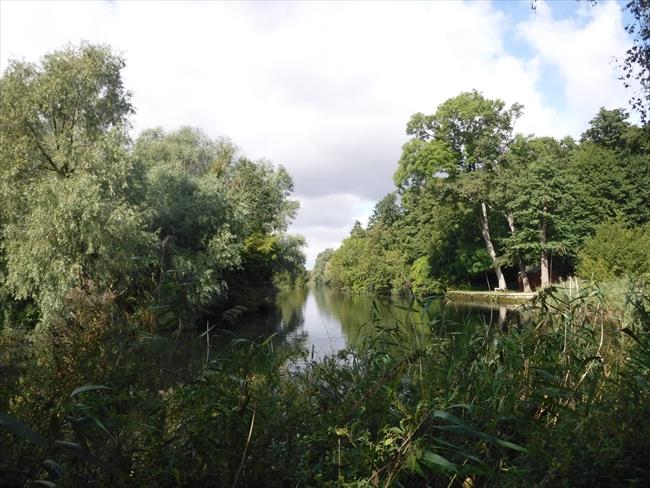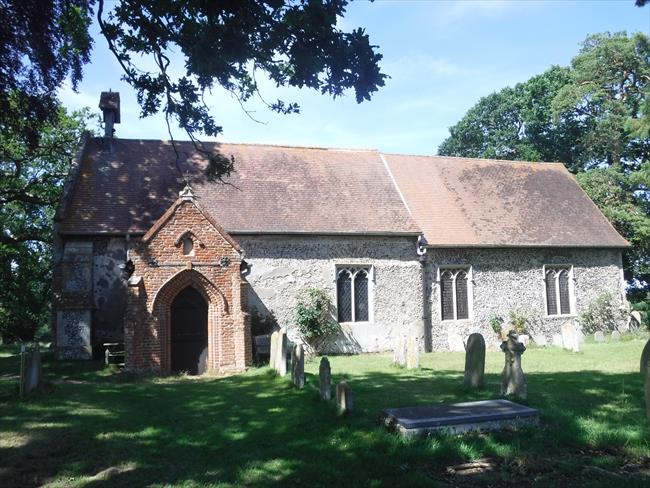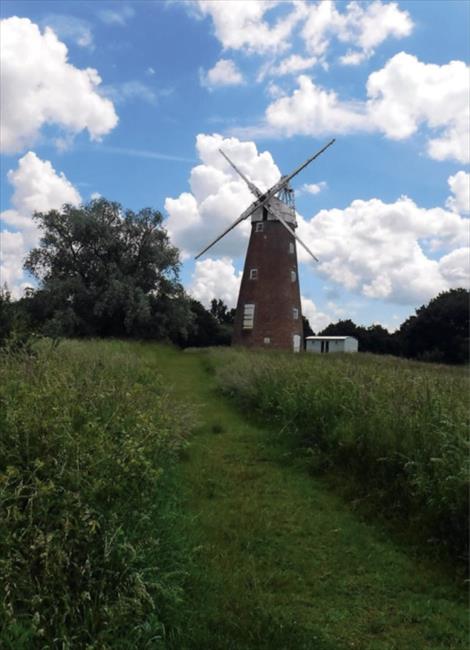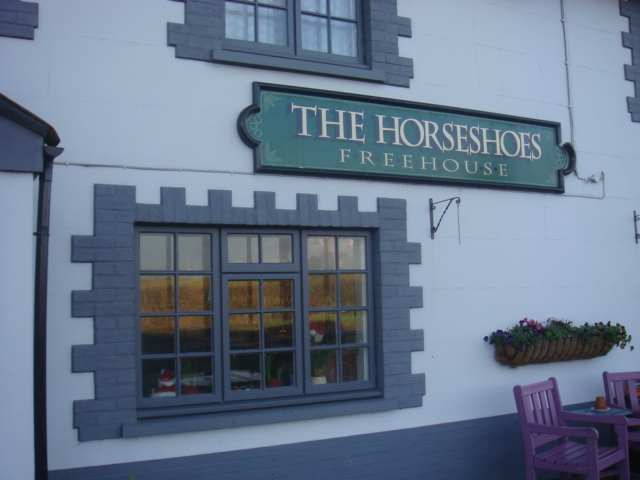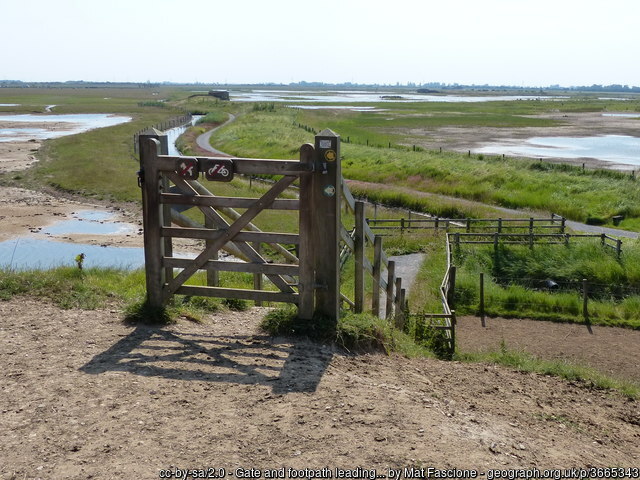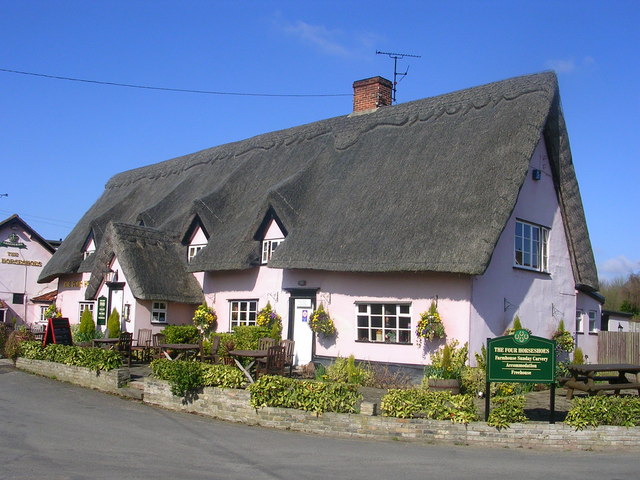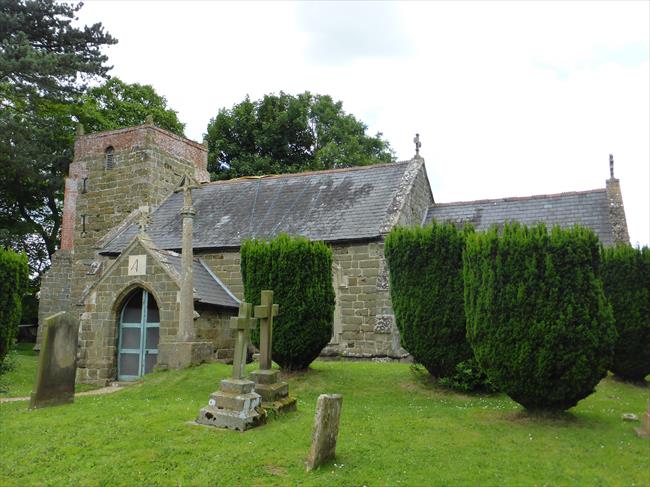1
Facing out to sea from the old quay in Blakeney, turn right, passing the Blakeney Hotel on your right to join the Peddars Way and Norfolk Coast Path, which heads out to into the saltmarshes towards Blakeney Point.
(A) The harbours at Blakeney, Cley and Wiveton were known collectively as the Glaven Ports, and together formed one of Britain’s most important trade hubs from the thirteenth century until the sea finally abandoned them over six hundred years later. Gathered closely around the mouth of the River Glaven, they specialised in the export of wool, flour, corn and fish, and the importation of coal from Newcastle and stone quarried in Northamptonshire. They were also among the few English ports trusted to carry gold and silver, and had a special licence to “export” pilgrims during the fifteenth century.
Follow the Peddars Way and Norfolk Coast Path for about an hour (4km/2.5miles). The path passes Blakeney Eye and arcs round to bring you towards Cley-next-the-Sea.
(B) An "eye" is an area of higher ground in the marshes, dry enough to support buildings, hence the name Blakeney Eye. Over the years it has been home to a ditched enclosure, a Carmelite friary and a building known as "Blakeney Chapel", which was occupied from the 14th century to around 1600, and again in the late 17th century.
When you meet the A149 Coast Road, turn left along the footpath near the road towards the village with the unmistakable form of Cley Windmill on your left.
(C) This part of Cley-next-the-Sea (pronounced, and originally spelled “Cleye”) originally served as the harbour, with the town centre sited half a mile south at Newgate Green (Cley Green on OS maps) by the church. But in 1612 a fire destroyed over a hundred buildings, and this, coupled with the gradually receding tide, provided an opportunity to move the town further upriver to this place so that it could be more “next-the-sea”. The Cley Windmill was a working flour mill until 1919, after which it passed into the family of the singer James Blunt.Today it operates as a top-end guesthouse. As with all prosperous ports, smuggling was rife, and pirates were never far off shore. There were numerous tunnels used to smuggle contraband in and out of Cley, right under the noses of the Customs & Excise Men. Even today at least two local houses are said to have smugglers’ tunnels connected to their basements.
You’ll soon come to a small road bridge over the river which leads into Cley. (If you wish shorten the walk there are buses back to Blakeney or to Sheringham which leave from outside Picnic Fayre Deli). Walk left round the far corner from the Deli into the high street and turn left down an alley opposite the phone box. Walk past the Old Town Hall and follow the path that takes you behind the houses on the main street, along an old jetty and straight to the windmill. Here you have to turn right through a small alley. Then walk up some steps to emerge on the main street outside Crabpot Books.
2
To continue, take the public footpath to the left of Crabpot Books which slips down the centre of the village behind the George pub to emerge on a surfaced lane (Church Lane). Continue along this lane in a southerly direction past the village hall, ignoring the road on your right, until you reach a long flint-cobbled wall and Knoll House. Turn right into St Margaret’s Church. Go through the gate into the churchyard and round to the far side of the church where there is a large picnic area. Exit right onto Newgate Green (Cley Green on OS maps).
(D) This part of Cley-next-the-Sea around the church was originally the town centre. Cley’s unsung jewel is the magnificent St Margaret’s Church. The local De Vaux family are responsible for its cathedral-like proportions. These wealthy merchants rebuilt the church in the fourteenth century to reflect Cley’s growing importance. Unusually the three Glaven churches at Cley, Wiveton and Blakeney are all within sight of one another, their grandeur a reminder of how the wealthy merchant patrons competed for status.
3
Cross over to the far (south) side of the large triangular green, ignoring the first road left (Three Swallows pub is back to your right), taking the road opposite, to the right of the houses. Follow this road south, with the river on your right, to a crossroads where you turn right across Wiveton Bridge up to Wiveton, with St Mary the Virgin Church and the Bell pub on the green.
(E) Wiveton’s jewel is the small bridge crossing the River Glaven. It was constructed over seven hundred years ago to provide a vital connection to the port at Cley, and is today one of the oldest working bridges in England. Wiveton specialised in ship-building and repair, and provided ships for the Hundred Years’ War, and as many as 36 ships to combat the Spanish Armada. The harbour ran alongside the church of St Mary the Virgin, and the churchyard wall still bears the scars of ships anchored here.
On the opposite side of the green from the church take the centre road marked with a picnic spot signpost (not the main Holt road left or right) and continue uphill to Wiveton Downs (approx 15mins).
4
Here you’ll come to a fingerpost pointing left to Wiveton Common and right to Blakeney. It’s worth a short detour left through the kissing gate onto the common to admire the views south, but retrace your steps and take the right path marked “Blakeney” onto Wiveton Downs/Blakeney Esker SSSI).
(F) The final stretch of the walk follows a 3-km/2-mile “esker” from Wiveton Downs across Blakeney Downs and back to the coast. An esker is formed by meltwater flowing through a tunnel beneath a glacier; when the glacier disappears a long ridge of sand and gravel is left in its place. Blakeney Esker was formed during the last Ice Age, 15,000 years ago, and is one of the finest examples of this geological process anywhere in England, which has earned it SSSI status. The height of the esker, in an otherwise flat Norfolk landscape, provides a perfect vantage point to survey the Glaven Valley. In fact the view here, with St Nicholas’ Church on the bluff above Blakeney, rivals the classic great view at Cley.
Upon entering Wiveton Downs follow the path bearing left passing a small bump (which is irresistible to climb), and circle round left past a gate to exit on Saxlingham Road. Cross the road and walk up the bridleway signed towards Blakeney. Follow this bridleway through New Farm to the next road crossing (approx 15mins), where you cross over onto a surfaced path (through white gates) and up to some houses.
5
Turn left here following a well-worn path at the side of fields making your way across Blakeney Downs. When the path cuts through a gap in the trees bear right towards the house on the small hill (or bluff). The path skirts the left side of the bluff until you reach the main road. Turn right on the road, crossing carefully near the brow of the hill and then almost immediately left onto the bridleway, which drops down to meet the Peddars Way & Norfolk Coast Path. Turn right to follow the coast path back to Blakeney.

